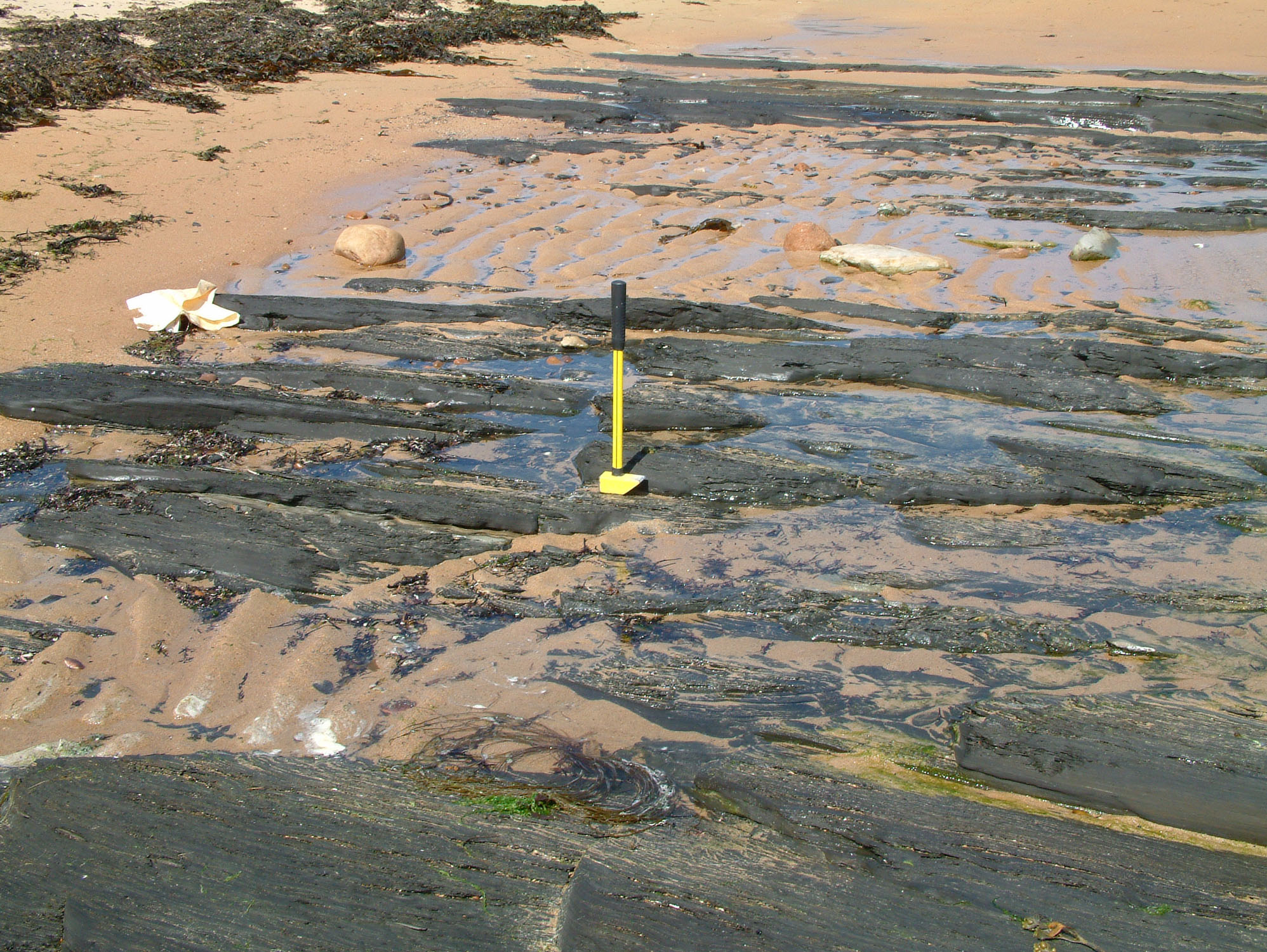Lothbeg is a tiny Hamlet in northern Scotland. Fossils can be found in the Jurassic rocks on the foreshore. Kimmeridge Clay is often exposed and plants can be found in the soft Lothbeg Beds.
DIRECTIONS
♦ To get to Lothbeg, you need to take the turning at Crakaig. This is a very small hamlet, so can easily be missed, as it is badly signposted. It is in between the villages of Lothbeg and Lothmore. Crakaig itself is split into two small parts: to the north is ‘Crakaig Crofts’ and just south of this is ‘Crakaig’.
♦ At Crakaig, there is a very small road that leads to the coast. This road is very difficult to see and goes down a hill. You can just about make out in the distance a small railway bridge under which the road passes. Take this road and follow it all the way down and round until you pass under the railway bridge. This is a very narrow single track road and can be busy at certain times, with caravans passing through. The road then veers to the left.
♦ Follow this road and take a sharp turn right, down a steep hill. At this point, the road is nothing more than a grassy dirt track. It will eventually take you near several caravans. Park here to access the shore. From there, head south.
♦ Ref: 58.06278°N, 3.76673°W
PROFILE INFO
FIND FREQUENCY: ♦♦♦ – To find fossils, you need a good scour, which does not happen very often. The Jurassic shales are below beach level.
CHILDREN: ♦♦♦ – Although Lothbeg is suitable for families, it is not suitable for children because of the very low find frequency. However, it does have sandy beaches, which do make for a good family day out.
ACCESS: ♦♦ – This location is quite difficult to find and there is no official car parking. However, the walk is quite short and easy.
TYPE: – There are no cliffs at Lothbeg. All of the fossils come from the shales, which are exposed during scouring conditions.
FOSSIL HUNTING
Within the Kimmeridge Clay, you can find ammonites and shells. There is quite a lot of this exposed at Lothbeg, but you really need a good scour to clear away the sand. However, small patches are often seen. The winter and spring months are the best time to collect here. Reptile remains have been found in the past, washed up in the shingle and between small rocks. Past Lothbeg Point, plant remains can be seen in the light-coloured sandstones on the foreshore. Occasionally, whole plants can be found.
Most of the fossiliferous Jurassic beds require some scouring for you to have any success in finding fossils. Look for areas of blue (Kimmeridge) clay. These beds are similar to those of Helmsdale. Also look in the areas of shingle. Further round the corner, examine the foreshore carefully, where a white/yellow sandstone rock can be seen, packed with tiny plant remains and sometimes whole plants and leaves.

GEOLOGY
The Allt na Cuile Sandstone Member of the Helmsdale Boulder Beds formation (Sutherland Group) can be seen at Lothbeg Point and is a white, grey or yellow fine-grained sandstone of Kimmeridgian age. Plant remains can be found in some beds.
Below these are the Kintradwell Beds, comprising of thin Kimmeridge Shales. North from Lothbeg Point, various outcrops of ‘Boulder Beds’ can be seen, similar to those of Helmsdale, but these are fragmented and quite small. New ammonite finds indicate that the Allt na Cuile Sandstones and overlying Loth River Shales range in age from at least basal Cymodoce Zone into the Mutabilis Zone (Kimmeridgian). These sediments differ markedly from the boulder bed facies of those zones to the north and south.


SAFETY
Common sense when collecting at all locations should always be used and prior knowledge of tide times is essential. The tide can reach quite high up the beach at Lothbeg. Therefore, ensure you return well before high tide. The foreshore can also be very slippery and rocky. Wear suitable footwear.
EQUIPMENT
The foreshore at Lothbeg often contains Kimmeridge Clay, so it is always handy to take a pick, trowels and knives for this type of location.
ACCESS RIGHTS
This site is an SSSI. This Special Site of Scientific Interest, means you can visit the site, but hammering the bedrock is not permitted.
 Scotland’s fossil resource is at risk of abuse and damage, and so we must all safeguard and managed fossil collecting to ensure its survival for future generations. For this reason it is VITAL you read and adhere to the Scottish Fossil Code for ALL sites in Scotland.
Scotland’s fossil resource is at risk of abuse and damage, and so we must all safeguard and managed fossil collecting to ensure its survival for future generations. For this reason it is VITAL you read and adhere to the Scottish Fossil Code for ALL sites in Scotland.
It is important to follow our ‘Code of Conduct’ when collecting fossils or visiting any site. Please also read our ‘Terms and Conditions‘
LINKS
♦ Buy Fossils, Crystals, Tools
♦ Location Discussions
♦ Deposits Magazine
♦ Join Fossil Hunts
♦ UK Fossils Network

























